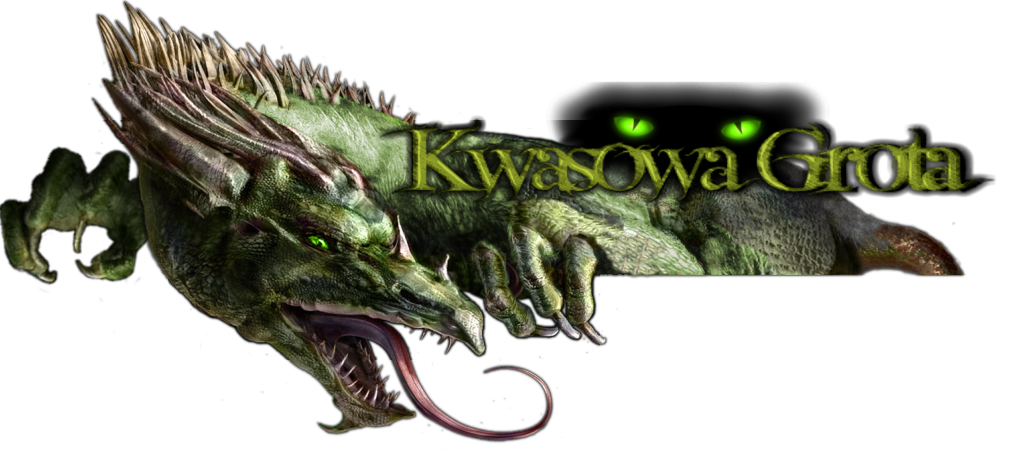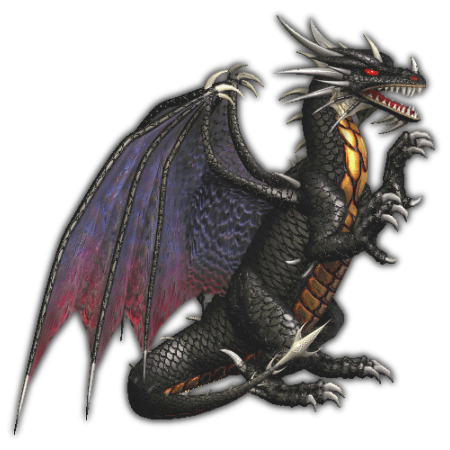Interview with David Mullich on Heroes III
short introduction: David Mullich was the director of Heroes of Might & Magic III in New World Computing. He also worked on Heroes IV and - to a lesser extent - on the Might & Magic RPGs. He is best known to players as "sir" Mullich, the knight hero from the Armageddon's Blade expansion. Dla wersji polskiej przejdź tutaj: Wywiad z Davidem Mullichem o Heroes III
Dla wersji polskiej przejdź tutaj: Wywiad z Davidem Mullichem o Heroes III Can you tell us a bit about yourself and your career?
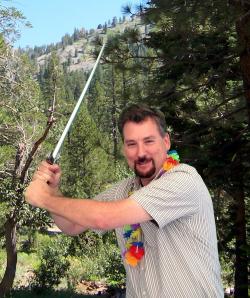 I got my start in game development when personal computers first became available for the home. I was a computer science student at California State University, Northridge, where one of my professors offered me a job as a clerk in an computer store that he owned with several other instructors. It was while working in the store that I met the owner of Edu-Ware Services, a small educational and game software publisher. I wrote several games for Edu-Ware while I attended college, and then joined the company full-time as a designer-programmer after I graduated. The most popular game I made at Edu-Ware was The Prisoner, which was an adventure game based upon the British spy television series starring Patrick McGoohan.
I got my start in game development when personal computers first became available for the home. I was a computer science student at California State University, Northridge, where one of my professors offered me a job as a clerk in an computer store that he owned with several other instructors. It was while working in the store that I met the owner of Edu-Ware Services, a small educational and game software publisher. I wrote several games for Edu-Ware while I attended college, and then joined the company full-time as a designer-programmer after I graduated. The most popular game I made at Edu-Ware was The Prisoner, which was an adventure game based upon the British spy television series starring Patrick McGoohan.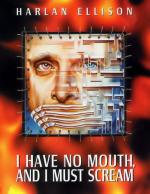 When Edu-Ware was acquired by another company several years later, three of my co-workers and I formed our own game publisher, Electric Transit, which made 3-D simulations. We became Electronic Arts very first affiliated label publisher, but we weren't sufficiently capitalized to last more than a couple of years. I then joined The Walt Disney Company as its very first video game producer, and oversaw development of console and computer games based on DuckTales, Who Framed Roger Rabbit, and other Disney properties. After four years of working for The Mouse, I decided to turn to the Dark Side by joining a small publisher called Cyberdreams, which made edgier games in collaboration with famous names from science fiction and fantasy. I worked with writer Harlan Ellison on the video game adaptation of his famous short story "I Have No Mouth, And I Must Scream" and artist H.R. Giger on a game called "Dark Seed," which was based on his artwork. I remained with Cyberdreams until its owner decided to focus on other businesses.
When Edu-Ware was acquired by another company several years later, three of my co-workers and I formed our own game publisher, Electric Transit, which made 3-D simulations. We became Electronic Arts very first affiliated label publisher, but we weren't sufficiently capitalized to last more than a couple of years. I then joined The Walt Disney Company as its very first video game producer, and oversaw development of console and computer games based on DuckTales, Who Framed Roger Rabbit, and other Disney properties. After four years of working for The Mouse, I decided to turn to the Dark Side by joining a small publisher called Cyberdreams, which made edgier games in collaboration with famous names from science fiction and fantasy. I worked with writer Harlan Ellison on the video game adaptation of his famous short story "I Have No Mouth, And I Must Scream" and artist H.R. Giger on a game called "Dark Seed," which was based on his artwork. I remained with Cyberdreams until its owner decided to focus on other businesses.Can you tell us how you got involved with the Might & Magic saga?
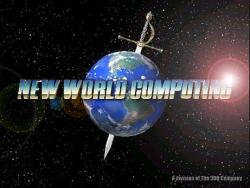 After Cyberdreams closed down, I was contacted by Cyberdreams former technical director, John Krause. He told me that he was now working as a programmer at New World Computing, where they were looking for someone to manage the team developing the Heroes of Might & Magic series. I sent John my resume, and two weeks later I had a meeting with Mark Caldwell, New World's General Manger, and Jon Van Caneghem, the company's founder. I had actually met Jon a couple of years prior -- we were both on a game design panel at the annual Game Developers Conference. However, I didn't know I had officially gotten the job until after I had a two-hour telephone interview with Trip Hawkins, who was president of The 3DO Company, which owned New World. That telephone call was quite an experience, since Trip Hawkins was the most powerful person in the game industry at the time, having founded Electronic Arts and inventing game publishing as we know it today.
After Cyberdreams closed down, I was contacted by Cyberdreams former technical director, John Krause. He told me that he was now working as a programmer at New World Computing, where they were looking for someone to manage the team developing the Heroes of Might & Magic series. I sent John my resume, and two weeks later I had a meeting with Mark Caldwell, New World's General Manger, and Jon Van Caneghem, the company's founder. I had actually met Jon a couple of years prior -- we were both on a game design panel at the annual Game Developers Conference. However, I didn't know I had officially gotten the job until after I had a two-hour telephone interview with Trip Hawkins, who was president of The 3DO Company, which owned New World. That telephone call was quite an experience, since Trip Hawkins was the most powerful person in the game industry at the time, having founded Electronic Arts and inventing game publishing as we know it today.What are your best or worst memories of Heroes III dev.?
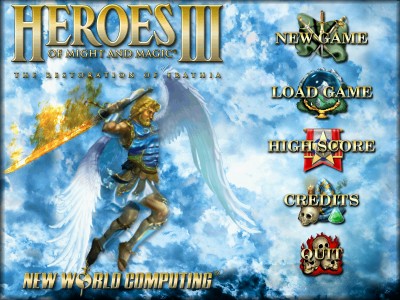 Almost all of my memories about developing Heroes III was good, but I have to say the best memory was the birth of my second son, Timothy, while we were developing the game. When I returned to the office after taking a week off for my son's birth, I found that the Heroes team had completely filled my office with balloons. Now, the only bad memory was due to a different kind of birth -- birthing the game. Developing a game is a very difficult thing to do, and as it's nearing completion, there's a lot of pressure to meet the delivery schedule required by the marketing, sales and manufacturing commitment dates. And since you want to make the best game possible, you wind up working very long hours to meet that date, and everyone is very tired. I usually wind up hating every game I've worked on by the time it's shipped, but I have to say that Heroes III was the exception; it's the only game that I still played after I had finished making it.
Almost all of my memories about developing Heroes III was good, but I have to say the best memory was the birth of my second son, Timothy, while we were developing the game. When I returned to the office after taking a week off for my son's birth, I found that the Heroes team had completely filled my office with balloons. Now, the only bad memory was due to a different kind of birth -- birthing the game. Developing a game is a very difficult thing to do, and as it's nearing completion, there's a lot of pressure to meet the delivery schedule required by the marketing, sales and manufacturing commitment dates. And since you want to make the best game possible, you wind up working very long hours to meet that date, and everyone is very tired. I usually wind up hating every game I've worked on by the time it's shipped, but I have to say that Heroes III was the exception; it's the only game that I still played after I had finished making it.Do you have interesting facts to share about this development? (Insights or Easter Eggs)

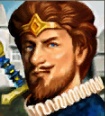 As I'm sure most Heroes III fans know, several of the heroes in Heroes III are based on development team members. When I returned from paternity leave, I found that the team had taken an image of me used for a town elder in one of the Might & Magic RPG games and put me into Heroes III as Sir Mullich. They also put in my assistant director, Christian Vanover as the knight Christian. The barbarian "Crag Hack" is based on a character created by Jon Van Caneghem when he played Dungeons & Dragons. In the Armagaddon's Blade expansion, the elementalist Inteus is based on concept artist George Almond, and the ranger Gelu is based on animator Adam McCarthy.
As I'm sure most Heroes III fans know, several of the heroes in Heroes III are based on development team members. When I returned from paternity leave, I found that the team had taken an image of me used for a town elder in one of the Might & Magic RPG games and put me into Heroes III as Sir Mullich. They also put in my assistant director, Christian Vanover as the knight Christian. The barbarian "Crag Hack" is based on a character created by Jon Van Caneghem when he played Dungeons & Dragons. In the Armagaddon's Blade expansion, the elementalist Inteus is based on concept artist George Almond, and the ranger Gelu is based on animator Adam McCarthy.If you had only one project to choose in your career, which one would it be?
There are many game that I'm proud to have developed or produced, but if I could only pick one to be remembered for, it would have to be Heroes III. Not only was it the most fun to make, but it still remains fondly remembered by the fans after all these years.
It has been already 20 years since the first Heroes of Might & Magic title, how will you celebrate this amazing anniversary?
Of course, I'll be downloading and playing the Heroes III HD edition when it comes out, and I've changed my Facebook profile picture to that of Sir Mullich.
What do you think about the impressive interest of the fans for the return of Heroes III in HD?
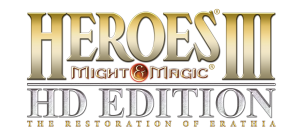 I am humbled by how loyal fans have remained to the game, and I am also very grateful that UbiSoft has paid attention to these fans. I've been very impressed with the upgrades I've seen to our original artwork, and I'm very eager to play the game.
I am humbled by how loyal fans have remained to the game, and I am also very grateful that UbiSoft has paid attention to these fans. I've been very impressed with the upgrades I've seen to our original artwork, and I'm very eager to play the game.What are you up to at the moment?
I spend a lot of my time lecturing and writing about game design. I now teach Game Production at The Los Angeles Film School. I also worked with the Boy Scouts of America on creating their new Game Design merit badge and run workshops several times a year teaching scouts how to design games. In addition, I give talks to educators and businessmen about how they can use game design principles to make what they do more fun and engaging to people. And, I continue to make games. Last year I produced two serious games about healthcare for the University of Santa Barbara and designed puzzle scenarios for a company planning to create a real-life Escape Room franchise.
What are you currently playing, and how do you like it?
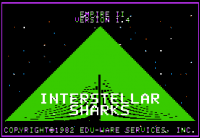 Most of my game-playing time is spent playing the games that my students have created. Many of them are great fun and quite ingenious. The last "professional" game I played was Monument Valley, which also was great fun because I like puzzles and love optical illusion artwork, like the paintings of M.C. Escher. In fact, in an early Apple II role-playing game I designed, Empire II: Interstellar Sharks, I named a spacecraft engine that twisted space an "Escher Drive."
Most of my game-playing time is spent playing the games that my students have created. Many of them are great fun and quite ingenious. The last "professional" game I played was Monument Valley, which also was great fun because I like puzzles and love optical illusion artwork, like the paintings of M.C. Escher. In fact, in an early Apple II role-playing game I designed, Empire II: Interstellar Sharks, I named a spacecraft engine that twisted space an "Escher Drive." Any message for the fans? :)
I want to thank the fans for all their support, both when we were making the original Heroes games and now that Ubisoft has carried on the legacy. We make these games for you, and I am gratified that you enjoy them so much.
Visit David on his blog: https://davidmullich.wordpress.com/
 Kwasowa Grota
Kwasowa Grota 